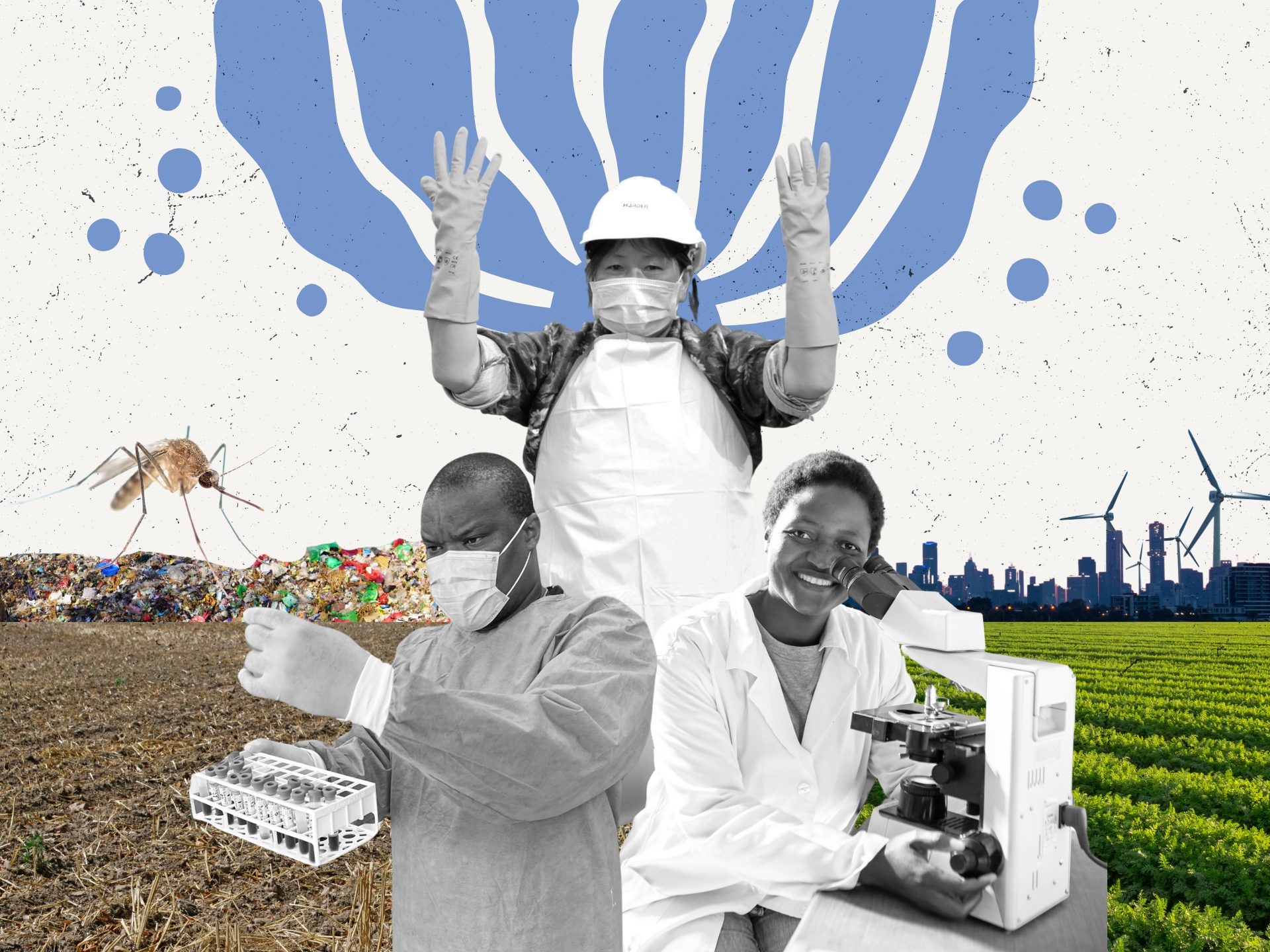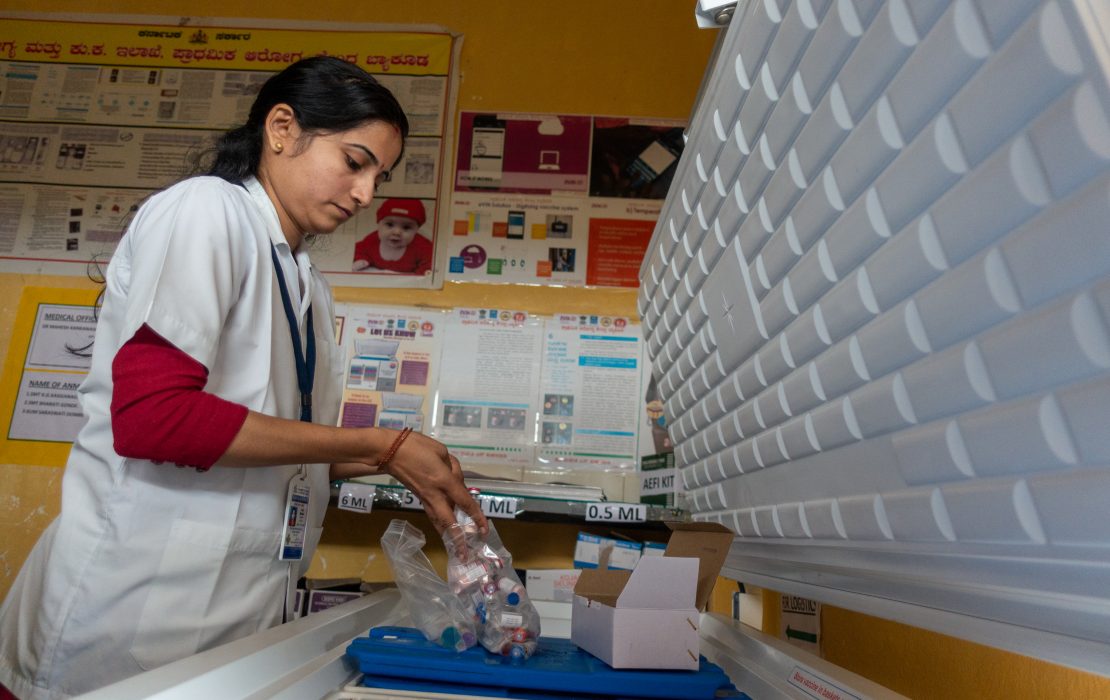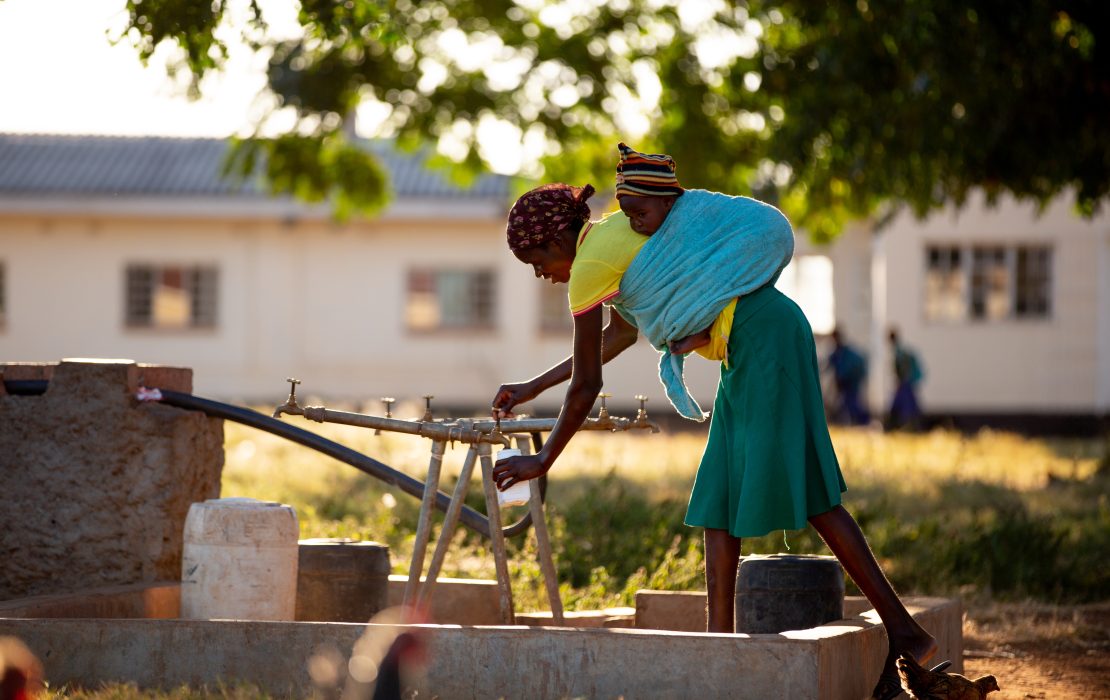
Summary
- Human health is deeply interconnected with our planet’s climate and the health of the biosphere.
- Climate change impacts human health through more frequent and intense severe weather, extreme heat, air pollution, intensified disease outbreaks and pandemics, increased malnutrition rates from food insecurity, and mental distress.
- As the impacts of climate change escalate, they can perpetuate or even aggravate cycles of inequality, deepening health and social inequities within and between countries.
- Countries must work to integrate climate and health policies and build climate-informed, green and resilient health systems.
What is the connection between climate change and public health?
Human health is deeply interconnected with our planet’s climate and the health of the biosphere. When temperatures and sea levels rise, when storms rage and wildfire smoke pollutes the air, when habitat destruction and droughts affect water and food security, humans cannot escape the consequences–especially in countries and communities already struggling to manage existing health challenges.
As the impacts of climate change escalate, they can perpetuate or even aggravate cycles of inequality, deepening health and social inequities within and between countries. Marginalized communities, who are least equipped to cope with the effects, often bear the brunt of these impacts.
What are some specific and common ways that climate change impacts our health?
- Severe weather: Extreme weather events such as storms, floods and landslides have caused over two million deaths between 1970 and 2021, with over 90 percent occurring in low- and middle-income countries. These events are becoming more frequent and severe due to climate change, inflicting immense physical and psychological harm. As a result, they increase demand for health services while simultaneously threatening the health sector’s ability to provide quality services and care by interrupting power lines, damaging or destroying facilities, and hindering access to care, especially in remote areas where infrastructure is already fragile.
- Extreme heat: Climate change is driving more frequent and intense heatwaves. For example, it is estimated that nearly 50,000 lives were lost in Europe in 2023 due to extreme heat. Under our current trajectory, about 2 billion people will be exposed to severe heat by 2100, with South and Southeast Asia being particularly vulnerable to wet-bulb temperatures. Many people are also increasingly at risk of wildfires, with longer fire seasons and the frequency and magnitude of extreme wildfires doubling over the past 20 years.
- Infectious diseases: Climate change is ushering in an era of new and intensified disease outbreaks and pandemics. Vectors, including disease-carrying mosquitoes, are already spreading to regions where they had never been present before. Extreme flooding aggravates the spread of waterborne diseases like cholera and rising temperatures are projected to cause a 20 percent increase in cases of dengue, Zika and chikungunya. By 2040, the spread of malaria alone could put 5 billion people at risk. And with ecosystems being reshaped by deforestation, urbanization and rising global temperatures, animals and humans are forced into closer contact, raising the risk for pandemics caused by zoonotic diseases like COVID-19.
- Malnutrition: The direct effects of climate change on health are compounded by indirect climate change impacts like loss of food supply–linked to droughts, floods, shifting seasons–which can create and exacerbate nutritional issues. A new analysis of 103 countries shows that days of extreme heat, increasing in frequency and intensity of drought due to climate change, accounted for an estimated 98 million more people reporting moderate to severe food insecurity in 2020 than the average in the period between 1981–2010.

Wildfires pose an extreme risk to human health. In 2023 alone, an area twice the size of Mexico was consumed by flames. Photo: UNDP Costa Rica / SINAC

By 2040, because of climate change, 5 billion people might be at risk of malaria. Community health points are crucial for early diagnosis and treatment. Photo: Miguel Samper / UNDP Bolivia
- Air pollution: The burning of fossil fuels is the primary cause of climate change, but it is also responsible for air pollution. 99 percent of the world is breathing at levels deemed unsafe by the World Health Organization (WHO). Air pollution is associated with an increase in several chronic diseases like cancers and heart and respiratory diseases and can seriously aggravate existing conditions. The WHO estimates that air pollution is responsible for about 6.7 million deaths annually, and is linked to negative pre- and postnatal outcomes and neurological conditions such as dementia. Low- and middle-income countries pay the heaviest price, with 90 percent of premature deaths caused by air pollution occurring in these countries.
- The mental toll: Whether it’s trauma, mental illness and distress in response to floods, storms and wildfires, or the chronic mental health impacts of water and food shortages, conflict and migration, and more frequent and severe pandemics, climate change has widespread and alarming implications for mental health. The awareness of these threats leads to its own psychological impacts, with ‘climate anxiety’ and ‘eco stress’ impacting many, particularly young people who must cope with the prospect of a highly uncertain and unstable future. By 2030, the additional cost of mental disorders due to changes in climate-related hazards, air pollution and inadequate access to green space is estimated to reach almost US$47 billion annually.
What can countries do to limit the health impacts of climate change?
Countries must incorporate health at every step of the way in their climate change mitigation, preparedness and adaptation measures. This includes deeply interrogating the systems we've built–reliant on fossil fuels, unsustainable land use and agricultural practices, deforestation and urban sprawl–which not only drive climate change but also intensify the health consequences, particularly for vulnerable groups.
Integrate climate and health policies
An increasing number of actors, including the Intergovernmental Panel on Climate Change (IPCC), are calling for coordinated action across sectors to alleviate the health impacts of climate change. At COP28 in 2023, 148 country governments endorsed the groundbreaking COP28 Declaration on Climate and Health. In this declaration, countries committed to pursuing better integration of health considerations into their climate policy processes and of climate considerations into their health policy agendas.
This entails, for example, taking health into account in designing the next round of Nationally Determined Contributions (NDCs) due in 2025. Currently, only 32 percent of these national climate pledges specifically mention the health sector and note climate-related health outcomes or adaptation measures.

A switch to LED lightbulbs is saving energy and improving conditions for health workers in Jamaica. Photo: UNDP Jamaica

The eVIN smart vaccine supply chain management system has revolutionized vaccine storage and stock monitoring in India. Photo: UNDP India
Build climate-informed and resilient health systems
Low-emission, resilient health systems are critical for keeping communities healthy as they grapple with the impacts of climate change. But what does a “resilient health system” actually look like in practice?
It might look like integrating climate and weather information in health surveillance systems that are monitoring climate-sensitive diseases. This helps ensure continuous data collection and analysis, efficient forecasting and early warning for health risks. It also involves enhancing climate-informed disease control and prevention programmes, including digitizing information and surveillance systems, improving medical laboratories for case detection, and training health personnel on climate change and health. It is also quite literal: climate-proofing healthcare facilities, infrastructure and operations, so that extreme weather events don’t severely disrupt or impact healthcare services.
And perhaps most importantly, it is about people. To ensure health service delivery and preparedness at every step of the way, countries must invest in and train local health workforces, strengthen community-led interventions and promote local climate action, all of which will enhance equitable access to and delivery of health services to meet people where they are.
Green the health sector and leverage health expertise
In 2020, the healthcare sector was responsible for 4.6 percent of global greenhouse gas emissions and one in three healthcare facilities lacked the resources to manage their waste. By transferring to renewable energy, greening the health sector supply chain and improving energy efficiency and waste management in the health sector, countries can advance their climate change mitigation efforts while improving health outcomes. The benefits are many: reduced emissions and air pollution, cost savings, improved access to quality healthcare, and enhanced resilience to future climate change impacts.
At COP26 in 2021, countries committed to lowering the emissions of their health systems, with 14 countries setting clear mitigation targets to reach net-zero carbon emissions from their health systems by 2050. As a result, the Alliance for Transformative Action on Climate and Health (ATACH) was created by the World Health Organization to help countries implement these commitments by revising their NDCs and other climate policies and programmes, with UNDP as a supporting member.
How can we ensure no one is left behind in climate and health efforts?
The impacts of climate change on human health and well-being are exacerbated by a vicious cycle of inequalities, disproportionately affecting society’s most vulnerable and marginalized people, including women, children (especially girls), the elderly, people with disabilities, Indigenous Peoples, outdoor and informal workers, and people living in poverty or in remote locations.
These groups often have less access to healthcare, safe housing and resources like air conditioning, making them more susceptible to diseases and the health impacts of extreme climate events. For example, people with disabilities are up to four times more likely to die in disasters. Climate change also poses an immense threat to pregnant women, newborns and children, not least of which is due to disease, poor nutrition and extreme heat, which can lead to adverse maternal and perinatal outcomes. People living with HIV or other chronic illnesses are also at risk if access to health services is disrupted by climate-related hazards or pandemics.

Disaster preparedness drills are crucial to protecting vulnerable groups, such as children, from climate hazards. Photo: Manuth Buth / UNDP Cambodia

Water scarcity affects vulnerable groups the most, particularly women and girls, who often bear the burden of ensuring water access for their households. Photo: UNDP Zimbabwe
In addition, climate change is expected to push up to 132 million people (more than half of whom live in Sub-Saharan Africa and South Asia) into extreme poverty by 2030, with 44 million of these driven by health impacts. Threats to incomes, livelihoods and well-being will be made all the more salient as climate change continues to force people to move within and out of their countries, further straining health systems, threatening human rights, increasing the risk of conflict and worsening poverty. In 2023, there were already at least 7.7 million people in 82 countries and territories living in internal displacement as a result of weather-related hazards. And by 2050, that number could increase to 216 million people due to slow-onset climate change impacts.
In light of this, countries must make a commitment to consider how power and discrimination shape health inequities and address the social determinants of health such as income, employment, education, food insecurity, housing and social protection, discrimination, displacement and more. Bold action at the global and national levels to reduce these inequalities is critical, including by considering how health can feature in ongoing discussions around loss and damage.
How does UNDP support action to limit the health impacts of climate change?
In 2023, UNDP worked with 59 countries on the nexus of health, environment and climate change, work that is guided by the UNDP HIV and Health Strategy 2022-2025 and UNDP Strategic Plan 2022-2025.

Under Solar for Health, UNDP has helped provide access to renewable energy for health facilities in 15 countries. Photo: UNDP Zimbabwe
Through its climate change mitigation work, UNDP aims to reduce the emissions footprint of the healthcare sector and improve health outcomes. This work includes supporting sustainable procurement initiatives to ensure health products have the lowest possible climate impact; helping governments adopt environmentally and socially sound practices to manage healthcare waste in Southwest Asia; and training women to become clean energy entrepreneurs to reduce indoor air pollution from cooking in Peru. Under Solar for Health, UNDP has helped enable climate-resilient, low-emission and reliable health services across 15 countries by providing access to renewable energy.
At the same time, UNDP’s support to 100 countries worldwide to adapt to climate change helps protect communities from the health impacts of growing water and food insecurity and more extreme weather events. Examples of this work include supporting the integration of health considerations into national adaptation policy and planning in countries from Bhutan to Papua New Guinea; fostering resilience for food security and climate resilient agriculture in countries from Kiribati to El Salvador; improving water resource management and access to water in countries from the Maldives to Somalia; strengthening access to climate information and early warning systems in countries from Pakistan to Malawi; and strengthening climate-resilient health systems in Least Developed Countries in Asia and the Pacific Islands in partnership with WHO and with funding from the Global Environment Facility (GEF).
With funding from the European Union, UNDP has supported Ethiopia, India and Mongolia to develop air pollution investment cases, revealing the economic, health and environmental burden of air pollution and calculating the return on investment for priority solutions.
Furthermore, in Bangladesh, Bhutan and Maldives, UNDP supports the safe sorting, sterilizing and disposing of healthcare waste to help prevent the negative impacts of healthcare waste on human and environmental health, with funding from Japan.
Continued, new and strengthened partnerships are key for this work to be effective and sustainable. In 2023, at COP28, the Green Climate Fund (GCF), UNDP and WHO launched a new initiative that is ramping up financial support for developing countries to mitigate and respond to the impacts of climate change on health in 15 countries across Africa, Asia and Southeastern Europe.

